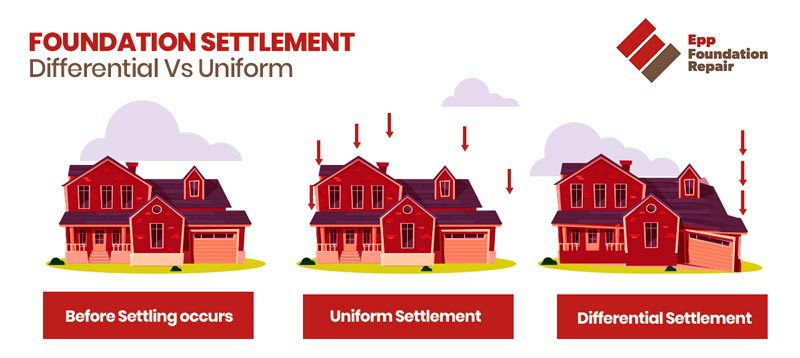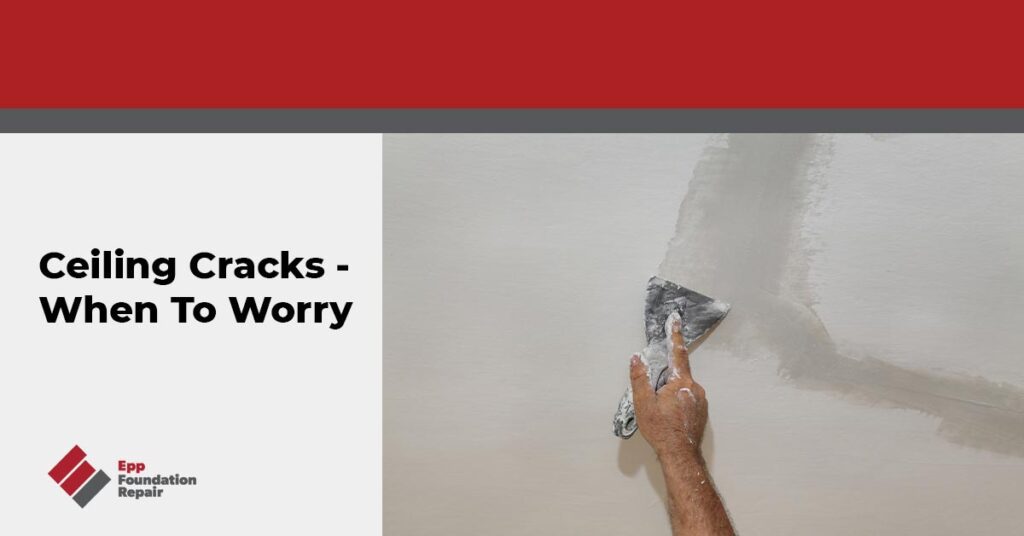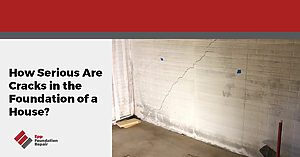If you’re searching for “ceiling cracks when to worry”, don’t hit that back button because you’ve landed on the right page. This article is all about ceiling cracks, including their causes, when to worry about them, ceiling crack repair solutions, and more.
Sometimes Ceiling Cracks Are Just Ugly
The good news is ceiling cracks aren’t always a sign of structural damage. Sometimes, they’re just unsightly, caused by moisture or paint build-up over the years. However, sometimes ceiling cracks are more serious and demand immediate attention from a foundation repair contractor or a structural engineer.
Causes Of Ceiling Cracks
Ceiling cracks can be caused by various things, including:
- Age – Nothing lasts forever, including houses. Eventually, they develop ‘’aches and pains’’, and one of these could be ceiling cracks.
- Problems related to moisture – Is there a bathroom or a kitchen above the ceiling crack?
- Something heavy on the floor above the crack – A grand piano, for example.
- Drywall problems – If not enough drywall mud is used during installation, it could result in the drywall tape coming loose. This can result in something that looks like a crack.
- Foundation settlement – All structures settle into the soil slightly after they’re built. This usually isn’t a problem so long as the settlement is uniform. Problems develop when the settlement is differential – when only part of the foundation is sinking into the soil. Differential settlement puts a lot of stress on a foundation and can lead to ceiling cracks. See the infographic below for more information:

Ceiling Cracks: Types
There are various types of ceiling cracks, including, but not limited to:
- Cracks in paint or plaster – These will be very thin cracks, and while they might be ugly, they’re usually harmless.
- Ceiling cracks accompanied by sagging – This is a potentially dangerous situation. If you see this, contact a foundation repair contractor immediately.
- A crack that runs across the ceiling and down a wall – This is a sure sign of differential foundation settlement. Contact a foundation repair contractor and ask for an evaluation.
- A ceiling that’s separating from the wall – This is also a sure sign of foundation settlement. Call a foundation professional and ask for an evaluation.
Ceiling Cracks – When To Worry
You should worry about a ceiling crack when you see:
- A ceiling crack accompanied by sagging
- A ceiling crack that goes across the ceiling and down a wall
- A ceiling crack created by the wall separating from the ceiling
- A series of ceiling cracks
- Any ceiling crack you feel is suspicious
The bottom line is you should always investigate a ceiling crack, even small ones. They might have been caused by something like paint build-up over the years, but you need to make sure it’s not something more serious. If the crack was caused by structural damage, you’ll need to get it repaired right away. So, if you see a crack and you’re not 100% sure of the cause, contact a foundation repair contractor and ask for an evaluation.
Repair Solutions For Ceiling Cracks
The best repair solution for a ceiling crack depends on what caused it. If it’s a simple problem with old paint or plaster, the solution is to remove and replace it.
However, if the problem is related to a serious foundation issue like differential settlement, you will need to contact a foundation repair contractor. The two most common repair solutions for foundation settlement are push and helical piers to strengthen and stabilize the foundation. For more information about foundation underpinning using push or helical piers, see, What Is House Underpinning?
Common Signs A House Has A Foundation Problem
All homeowners should become familiar with the most common signs of foundation trouble because foundation issues spotted early cost less to repair. Some common signs of a foundation problem include the following:
- Ceiling cracks
- Wall cracks – Horizontal and diagonal cracks from the corners of windows and doors are almost always a sign of structural damage. Vertical cracks in a poured foundation wall were usually caused by shrinkage during the concrete curing process. (They’re typically harmless.) However, any wall crack needs to be investigated.
- Floor cracks – Look for cracks that go across the floor. If a crack is limited to one or two tiles, it probably happened when something heavy fell on the floor.
- Doors and windows that no longer open and close properly – This is a sign that foundation settlement has caused everything to be out of plumb.
- Unlevel floors – If the floor is slightly uneven, you might not even notice it. Place a marble on the floor and see what happens.
- Stair step cracks in brick or masonry – This is a telltale sign of differential foundation settlement.
- Bowed walls, with or without cracking
- Moldings that have separated from the wall or ceiling – Even slight separations are a cause for concern and should be checked out.
- Chimneys and porches that have separated from the house
Of course, if you see anything else that seems suspicious, that should also be checked out.
How To Prevent Foundation Problems
Since most foundation problems happen because there’s excess moisture in the ground around the foundation, you can go a long way toward preventing foundation trouble by controlling groundwater around the foundation. Here are some ways to do that:
- If necessary, regrade your yard so it slopes away from the foundation.
- Use downspout extensions to ensure water is released at least 4 feet away from the foundation.
- Don’t plant flowers, shrubs, or other vegetation next to the house. You don’t want a reason to add water to the ground around the foundation.
- Clean your gutters regularly so that water doesn’t spill over the side of your house and soak the ground around the foundation.
- Install a drain tile system. For more information on how they work, see What Is Drain Tile?
Do you have one or more ceiling cracks that are causing you to worry? If you’re in our service area in Nebraska, Iowa, Kansas, and Missouri, contact us today for a foundation evaluation.







